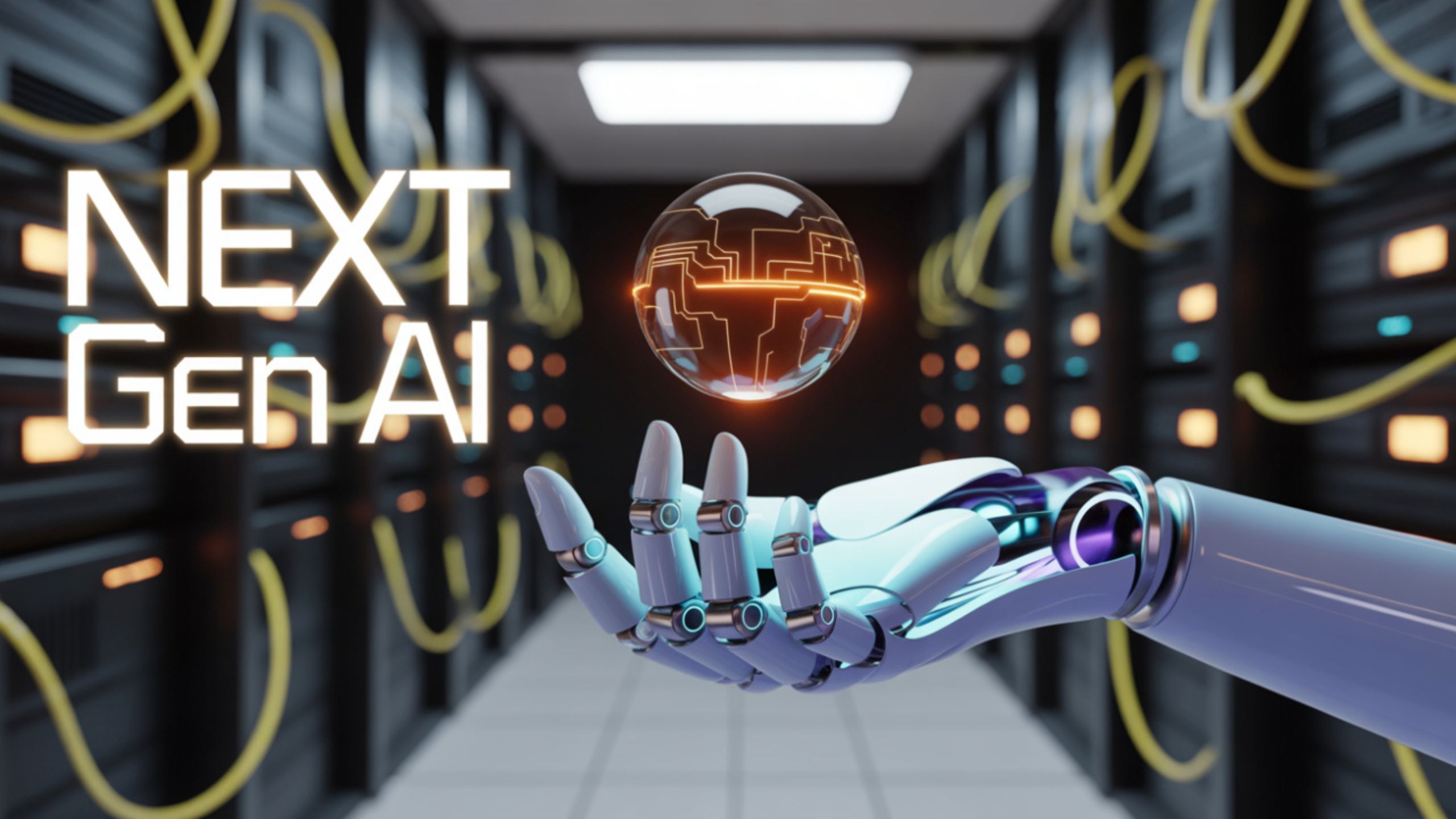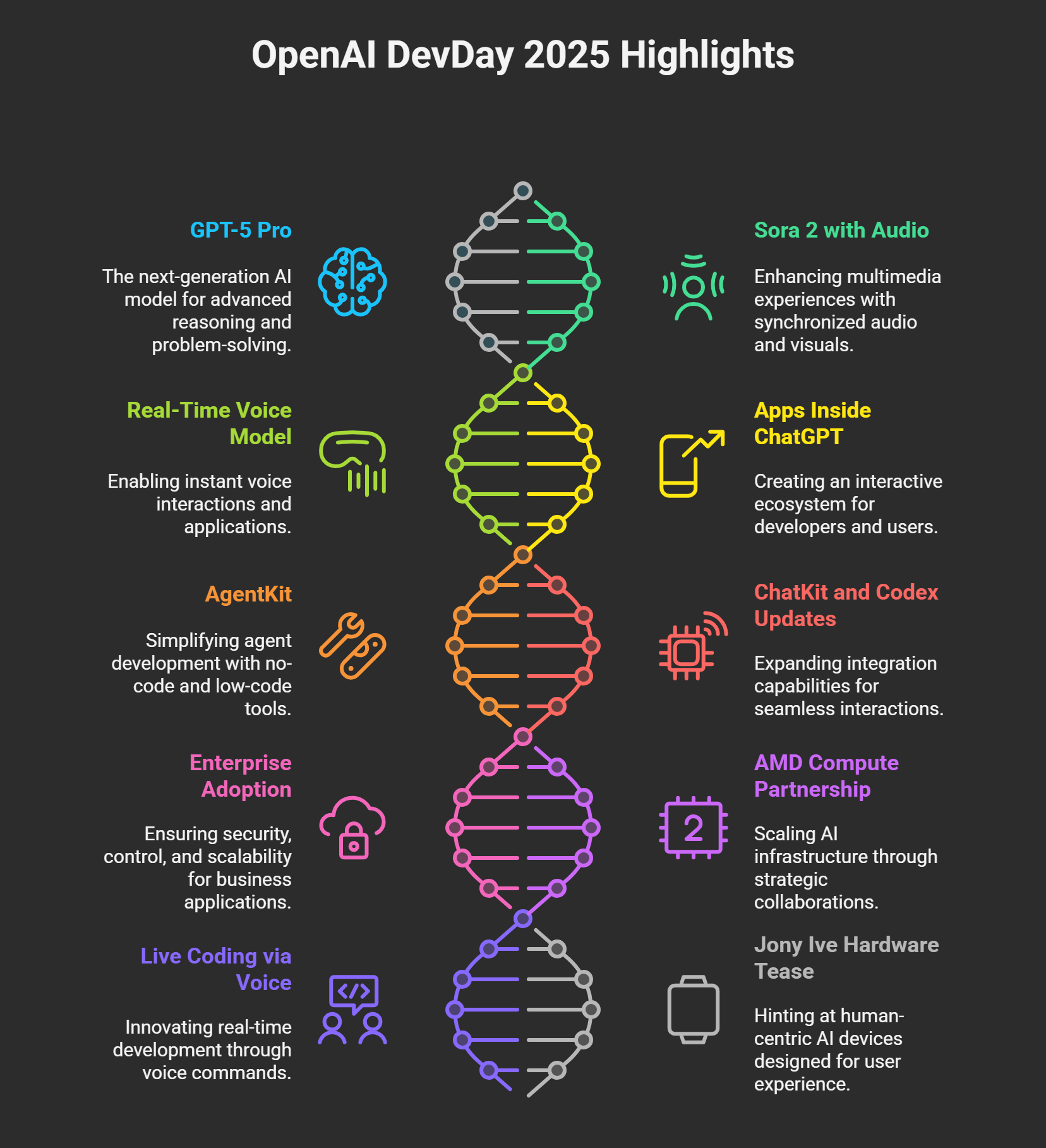Top 10 Announcements from OpenAI DevDay 2025– OpenAI’s DevDay 2025 delivered a landmark set of announcements, reinforcing its position as the global leader in AI innovation. From groundbreaking models to immersive audio-visual tools and enterprise-focused solutions, the event showcased transformative technologies designed to redefine AI interactions, developer workflows, and enterprise adoption. Here, we distill the top 10 announcements from the event, providing precise insights for developers, businesses, and tech enthusiasts.
1. GPT-5 Pro: The New Flagship Model for Advanced Reasoning
OpenAI unveiled GPT-5 Pro, a state-of-the-art AI model available through API. This flagship model is tailored for high-accuracy tasks, deep reasoning, and complex problem-solving. Unlike previous iterations, GPT-5 Pro excels in programming assistance, enterprise workflow automation, and domain-specific knowledge applications.
Key capabilities include:
- Enhanced multi-step reasoning, enabling complex decision-making tasks.
- High-fidelity code generation for multiple programming languages.
- Enterprise workflow integration, supporting scalable business processes.
- Optimized for large-scale data handling, ensuring reliability in mission-critical operations.
GPT-5 Pro represents a significant leap in AI intelligence, positioning OpenAI as a go-to solution for high-stakes computational challenges.
2. Sora 2 with Audio: Revolutionizing Multimedia Experiences
The Sora 2 API now supports synchronized, realistic audio and enhanced video generation, opening up avenues for immersive multimedia development. Developers can leverage Sora 2 for:
- Dynamic soundscapes in virtual environments.
- High-quality video generation with real-time audio synchronization.
- Applications in gaming, education, and content creation providing rich, interactive experiences.
Sora 2 enhances the creative pipeline, enabling developers to produce engaging multimedia content efficiently.
3. Real-Time Voice Model: GPT-Realtime Mini
OpenAI introduced GPT-Realtime Mini, a lightweight voice model designed for real-time AI interaction. This model prioritizes voice as a primary modality, enabling users to interact with AI naturally and seamlessly.
Applications include:
- Instant voice-controlled coding and debugging.
- Conversational AI agents are capable of responding in real-time.
- Integration with IoT devices, enhancing smart home and enterprise solutions.
The launch highlights OpenAI’s commitment to voice-first AI experiences.

4. Apps Inside ChatGPT: Interactive Developer Ecosystem
OpenAI expanded ChatGPT into a platform with “Apps inside ChatGPT”, leveraging the Apps SDK. Developers can now:
- Ship interactive apps directly in the chat interface.
- Integrate third-party tools seamlessly.
- Provide users with embedded experiences, eliminating the need to switch platforms.
This transforms ChatGPT from a conversational AI into a dynamic app ecosystem, empowering developers to create high-impact interactive tools.
5. AgentKit: No-Code and Low-Code Agent Builder
The AgentKit platform debuted as a no-code/low-code solution for building multi-step AI agents. Key features include:
- Orchestration of tools and approvals for workflow automation.
- Simplified creation of autonomous agents, reducing development overhead.
- Support for complex business logic and multi-step processes.
AgentKit allows organizations to rapidly deploy AI-driven workflows, bridging the gap between technical teams and operational execution.
6. ChatKit and Codex Updates: Expanding Integration Horizons
OpenAI showcased ChatKit enhancements and new Codex updates, enabling:
- Broader integration with devices and APIs.
- Voice and sketch-based software development, reducing reliance on manual coding.
- Real-time collaboration features supporting cross-platform development.
These tools provide developers with robust frameworks that enable them to create functional software quickly and efficiently, catering to diverse technological landscapes.
7. Enterprise Adoption: Security, Control, and Scalability
OpenAI emphasized enterprise-focused capabilities during DevDay 2025, with a focus on:
- Admin guardrails and role-based access controls.
- Data security and compliance are aligned with SOC 2 and ISO standards.
- High-throughput model deployments for large organizations.
- Customizable rollout strategies enable scalable adoption across various sectors.
This underscores OpenAI’s commitment to meeting enterprise-grade expectations, ensuring the secure and efficient utilization of AI.
8. AMD Compute Partnership: Scaling AI Infrastructure
A major compute partnership with AMD was announced, aimed at deploying up to 6 gigawatts of AMD GPUs. This strategic collaboration ensures:
- High-performance training and inference capabilities.
- Scalable AI infrastructure to meet growing developer and enterprise demand.
- Enhanced computational efficiency, reducing latency and operational costs.
This move strengthens OpenAI’s hardware-software synergy, enabling the deployment of next-level AI models.
9. Live Coding via Voice: Real-Time Development Innovation
OpenAI demonstrated live coding using only voice, illustrating capabilities such as:
- Building production-grade React applications via spoken instructions.
- Real-time hardware control and integration.
- Dynamic code edits without manual intervention.
This feature exemplifies hands-free software development, accelerating productivity and democratizing coding accessibility.
10. Jony Ive Hardware Tease: Human-Centric AI Devices
In a forward-looking announcement, Sam Altman and Jony Ive teased human-centric AI hardware concepts. These initiatives aim to:
- Enhance well-being through AI-enabled devices.
- Create intuitive interfaces for everyday interactions.
- Support long-term platform ambitions for seamless integration between software and hardware ecosystems.
The announcement signals OpenAI’s commitment to holistic AI experiences, blending hardware innovation with intelligent software.
Conclusion: OpenAI DevDay 2025 Redefines AI Development
OpenAI DevDay 2025 delivered ten transformative announcements that collectively advance AI capabilities across enterprise, creative, and interactive domains. With GPT-5 Pro, Sora 2, real-time voice models, ChatGPT apps, and AgentKit, developers are empowered to build sophisticated, human-centered applications with unprecedented speed and accuracy. Coupled with enterprise-grade security, AMD-powered compute, and live coding via voice, OpenAI continues to reshape the future of AI adoption across industries. The hints of human-centric hardware further demonstrate OpenAI’s vision of integrated AI ecosystems designed to enhance productivity, creativity, and well-being.
Ask Follow-up Question from this topic With Google Gemini: Top 10 Announcements from OpenAI DevDay 2025: Key Innovations and Developer Insights

Selva Ganesh is the Chief Editor of this blog. A Computer Science Engineer by qualification, he is an experienced Android Developer and a professional blogger with over 10 years of industry expertise. He has completed multiple courses under the Google News Initiative, further strengthening his skills in digital journalism and content accuracy. Selva also runs Android Infotech, a widely recognized platform known for providing in-depth, solution-oriented articles that help users around the globe resolve their Android-related issues.




Leave a Reply